“Josef Mengele CIA Files” has been added to your cart. View cart
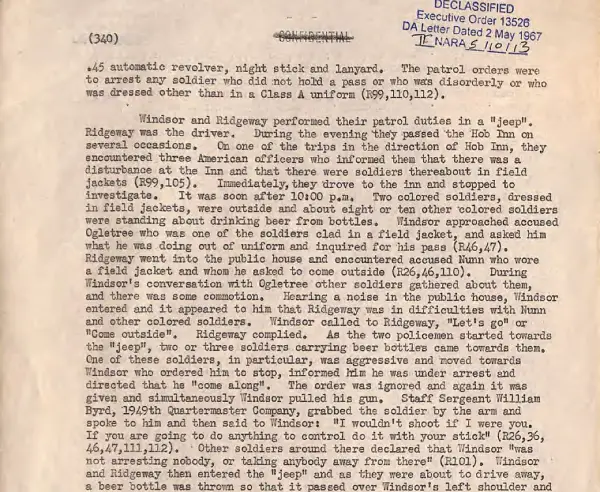
World War II: Bamber Bridge Mutiny – Courts Martial Records
$19.50
Category: War Files
Tags: world war 2, World War II
Description
The Battle of Bamber Bridge: A WWII Racial Clash
Pre-June 24, 1943:
- Ongoing: The racially segregated, almost entirely Black 1511th Quartermaster Truck Regiment of the Eighth Air Force is stationed in barracks in Bamber Bridge, Lancashire, England.
- Ongoing: American commanders attempt, unsuccessfully, to enforce segregation of service for African American servicemen in local Bamber Bridge businesses.
- Ongoing: Racial tensions and discriminatory practices are prevalent within the Army Air Forces (AAF) during World War II, leading to Black servicemen protests and riots in various installations. The AAF had historically resisted the inclusion of Black soldiers.
June 24, 1943:
- Night, Ye Olde Hob Inn, Bamber Bridge: White American Military Police (MPs) attempt to arrest several Black servicemen for being out of uniform.
- Night, Ye Olde Hob Inn/Streets of Bamber Bridge: The confrontation escalates and spills into the streets. A White MP shoots and kills Private William Crossland.
- Night, Bamber Bridge: MPs request backup, leading to the deployment of additional well-armed White MPs to the village.
- Night, Bamber Bridge: Additional Black servicemen arrive at Ye Olde Hob Inn after acquiring arms from their base armory.
- Night, Bamber Bridge: The exchange of gunfire between the two groups of American servicemen begins.
June 25, 1943:
- Continuing, Bamber Bridge: The exchange of gunfire between White MPs and Black servicemen continues.
- End of Fighting (by the end of June 25): One officer, three Black soldiers (including William Crossland, shot on June 24), and one MP are shot. Two other MPs are beaten.
Post-June 25, 1943:
- Immediate Aftermath: The incident is officially termed an “alleged mutiny.”
- First Courts Martial (related to the initial brawl): Four Black soldiers are convicted and sentenced to hard labor (one for 2.5 years, others for 3 years) and dishonorable discharges. One of these convictions is later overturned on review.
- Second Courts Martial (ETO 895 – Fred A. Davis, et al.): 35 defendants are charged. The proceedings involve 6,282 pages of court transcripts.
- September 18, 1943: The second trial concludes with 7 acquittals and 28 convictions. Sentences for the convicted range from three months to 15 years, with seven sentences of 12 years or more.
- Review of Sentences: On review, the release of one man is ordered, and reductions in all other sentences are made.
- June 1944: Fifteen of the convicted men return to duty.
- Later (Undated, post-June 1944): Six other sentences are further reduced.
- Later (Undated): The defendant with the longest sentence returns to duty after serving 13 months.
Long-Term Impact:
- Ongoing: The “Battle of Bamber Bridge” becomes a significant event in understanding race relations within the US military during WWII, particularly impacting command policy within the Army Air Forces.
- 1977: Alan M. Osur publishes Blacks in the Army Air Forces during World War II: The Problem of Race Relations, a book based on his Ph.D. dissertation, detailing racial protests and riots, including the Bamber Bridge incident, and their impact on race relations in the AAF.
- 2005: Alan M. Osur publishes Separate and Unequal. Race Relations in the AAF During World War II, further examining racial policy and the reluctant inclusion of African Americans in the AAF.
Cast of Characters: The Battle of Bamber Bridge
- Private William Crossland: A Black American serviceman of the 1511th Quartermaster Truck Regiment. He was shot and killed by a White American Military Police officer at the outset of the “Battle of Bamber Bridge” on June 24, 1943. His death was a key catalyst for the ensuing violence.
- Lynn M. Adams, et al. (Defendants in ETO 804): A group of Black servicemen who were among the four initially convicted in the first courts martial related to the initial brawl at Ye Olde Hob Inn. They faced charges related to the disturbance, with sentences including hard labor and dishonorable discharges (one conviction later overturned).
- Fred A. Davis, et al. (Defendants in ETO 895): A group of 35 Black servicemen who were charged in the second and larger courts martial following the “Battle of Bamber Bridge.” 28 of these defendants were convicted on charges ranging up to mutiny, receiving sentences from three months to 15 years. Their sentences were later reduced, and many returned to duty.
- White American Military Police (MPs): The primary antagonists from the official military side in the initial confrontation. They attempted to arrest Black servicemen for being out of uniform, escalating the situation and leading to the shooting of Private Crossland. Additional well-armed MPs were called in as backup, leading to prolonged exchanges of gunfire.
- Black Servicemen of the 1511th Quartermaster Truck Regiment: The majority Black regiment stationed in Bamber Bridge. They were the subjects of discriminatory practices regarding segregation in local businesses and were the group involved in the violent disturbance and subsequent courts martial. Many armed themselves from the base armory after the initial confrontation.
- American Commanders (in Bamber Bridge): Unsuccessful in their attempts to get local Bamber Bridge businesses to segregate service to African American servicemen, which contributed to the underlying racial tensions in the area.
- High AAF Leaders in Britain: These leaders reacted to the “Battle of Bamber Bridge” and other racial incidents in 1943, indicating the incident’s significant impact on command policy regarding race relations within the Army Air Forces.
- Alan M. Osur: Author of Blacks in the Army Air Forces during World War II: The Problem of Race Relations (1977) and Separate and Unequal. Race Relations in the AAF During World War II (2005). As an Air Force officer and Associate Professor of History at the Air Force Academy, his research and writings provide critical historical context and analysis of racial tensions, discrimination, and the impact of events like the Bamber Bridge mutiny on the Army Air Forces.
- Harold Pollins: Author of The Battle of Bamber Bridge, a related reading mentioned in the source, offering another account of the event
Related products
-
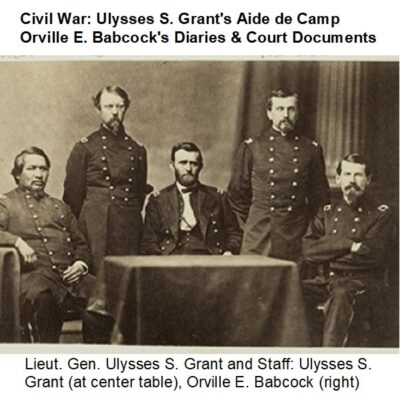
Civil War Ulysses S. Grant’s Aide de Camp Orville E. Babcock’s Diaries & Court Documents
$3.94 Add to Cart -
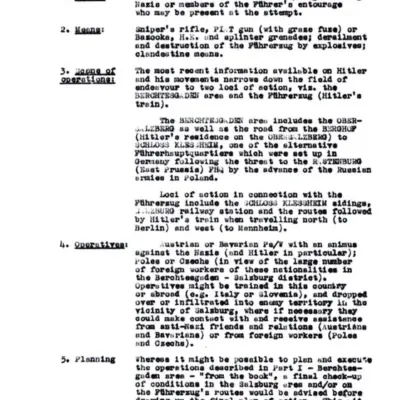
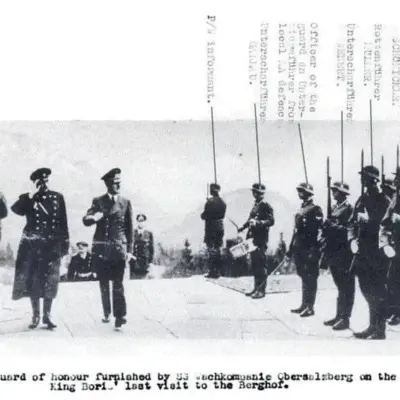
World War II: Adolf Hitler and Operation Foxley – British Assassination Plot
$19.50 Add to Cart -
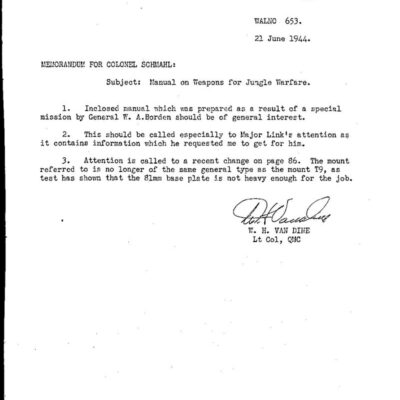
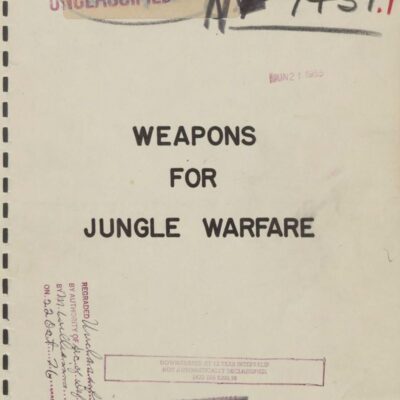
World War II Manual on Weapons for Jungle Warfare (1944)
$1.99 Add to Cart -
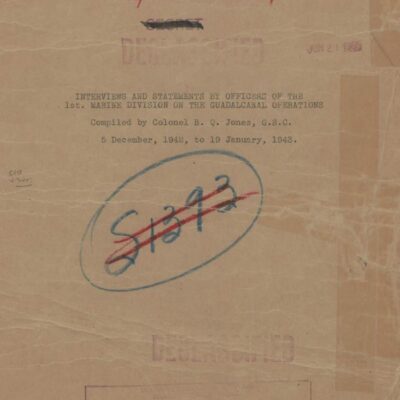
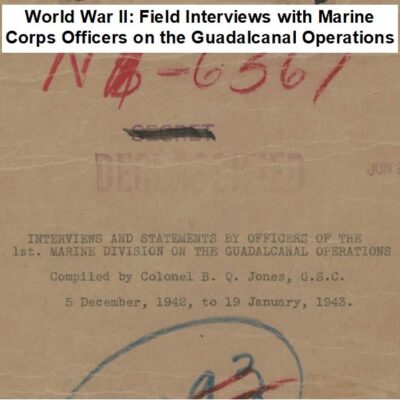
World War II: Marine Corps Officer Interviews on Guadalcanal Operations
$3.94 Add to Cart